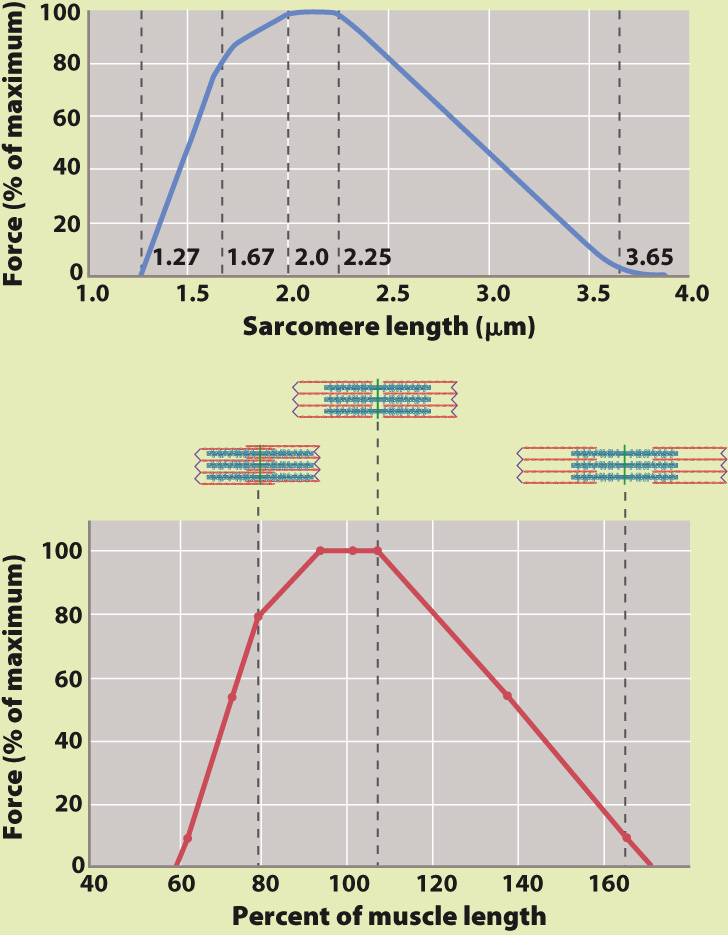Muscle length affects actin–
Why is it difficult to jump while standing on your toes? A muscle’s ability to generate force depends in part on how much it is stretched before contraction begins. The sliding filament model for muscle contraction, like any good model, makes specific predictions. In this case, it predicts that the amount of overlap between actin and myosin filaments within the sarcomere determines the number of cross-
793
HOW DO WE KNOW?
FIG. 37.9
How does filament overlap affect force generation in muscles?
BACKGROUND From the 1930s through the 1960s, British muscle physiologists studied the properties of striated frog muscle fibers. In the first set of experiments, A. V. Hill examined how a muscle’s shortening velocity affects its force production. In the second set of studies, American physiologists Albert Gordon and Fred Julian, together with British physiologist Andrew Huxley, studied how a muscle’s length when it contracts affects the muscle’s force-
HYPOTHESIS Gordon, Huxley, and Julian hypothesized that changes in overlap between myosin and actin affect the number of cross-
EXPERIMENT The three scientists isolated a single muscle fiber and used optical microscopy to measure sarcomere length. They kept this length constant while the fiber was stimulated to produce force. Measurements of force were then obtained at different sarcomere lengths. The length at which the muscle fiber generated maximum force is indicated on the graphs as 100%. Other lengths are expressed relative to this length.
RESULTS The top graph shows the data obtained by Gordon, Huxley, and Julian, and the bottom graph reinterprets their data in terms of force and percent of muscle length. Their experiments showed that the muscle fiber produced maximal force at an intermediate sarcomere length (approximately 2.3 µm). At this length, the greatest number of cross-

FOLLOW-
SOURCE Gordon, A. M., A. F. Huxley, and F. J. Julian. 1966. “The Variation in Isometric Tension with Sarcomere Length in Vertebrate Muscle Fibres.” Journal of Physiology 184:170–
This influence of muscle fiber length on force generated is the reason that you can’t jump well if you are on your toes and your ankles are fully extended: This position shortens your calf muscle fibers. Conversely, if your ankles are overly flexed, your calf muscles are lengthened, and again jumping force is limited. Through training, athletes and dancers learn techniques, such as bending the knees before jumping, so that their leg muscles contract at intermediate lengths to maximize muscle-
The relationship between force and length of striated muscle also explains Starling’s Law for the function of the heart as a pump (discussed in Chapter 39), which ensures that the heart contracts more strongly when it is filled by larger amounts of blood returning from the veins.
Quick Check 3 Why can you lift a larger load when your elbow is slightly flexed and your biceps muscle is at an intermediate length than you can when your elbow is fully extended?
Quick Check 3 Answer
Contracting at an intermediate length maximizes the overlap of actin and myosin filaments in the biceps fibers, allowing the greatest number of cross-